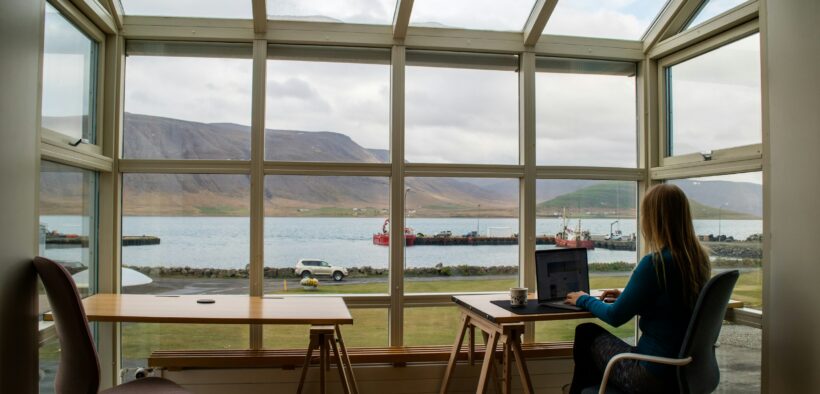The Nordic Governments on Work-Life Balance
Share

Image Credits: @kristinwilson on Unsplash (Unsplash License)
Introduction
Situated in the North Atlantic region, Iceland, Norway, Sweden, Finland, and Denmark make up the Nordic countries. United by geographic proximity and interconnected history, the Nordic alliance maintains good relations through their similar social structures and country values. Some of the key aspects that distinguish the Nordic countries from others include their beautiful natural landscapes, rich cultural heritage, and high quality of life. In particular, the Nordic countries receive global recognition for their gender equality, social inclusivity, safety, and, most importantly, their healthy work-life balance. With unique characteristics like generous parental leave, fewer working hours, and strong social welfare, the Nordic work culture stands out globally.
How do the Nordic countries have a remarkably superior work-life balance compared to the rest of the world? While there are a number of factors that contribute to making the Nordic work culture the way that it is—including cultural and social factors—the role of government plays a significant role in facilitating this balance. This article will explore the impact that the government has on the Nordic work culture through comparisons between the labor policies of Nordic countries and countries that possess a ‘Western work culture.’
Restrictions on Employment Hours: A Case Study of Iceland & the U.S.
First, Nordic governments enforce numerous laws that restrict working hours. While each Nordic country possesses its own unique laws, a better comparison of these laws can be explored through a case study between Iceland and the U.S. The U.S. possesses an extremely Westernized and capitalist economic system, whereas Iceland follows the more typical relaxed Nordic work culture and even pioneered a shorter workweek. The contrasting nature between the two countries provides a clearer understanding of the type of legal action that allows for a more relaxed work culture in the Nordic region.
Iceland became the first country to pilot the 35-hour workweek from 2015 to 2019. The goal of the government trials was to cut the work week from 40 hours to 35 hours by implementing a four-day workweek. The Reykjavik City Council and the Icelandic national government began these trials in response to demands from various trade unions and civil society organizations for shorter workweeks. These trials received overwhelmingly positive feedback as researchers found that “workers were able to work less, get paid the same, while maintaining productivity and improving personal well-being.” Furthermore, there are studies on how the four-day workweek actually increased job satisfaction and worker efficiency. As a result, the four-day workweek is now a permanent feature of Iceland’s work culture. In comparison, the Internal Revenue Service (IRS) states that in order to be qualified as a “full-time worker,” employees in the U.S. must work at least 30 hours per week. Additionally, the U.S. Bureau of Labor Statistics reported in 2022 that full-time employees work on average 8.42 hours a day, meaning they work about 42.1 hours per week. The stark comparison between the average employment hours between the two countries demonstrates how Nordic laws establish different labor standards and restrictions in response to their citizens’ demands.
Parental Leave Benefits: A Case Study of Denmark & Japan
Reduced work hours are not the only characteristic of Nordic’s unique work culture. Countries within the Nordic region also have numerous regulations and programs that provide welfare for their workers. Comparison between Denmark and Japan shows the differences between Nordic countries and other Western countries, as in the previous case study. In Denmark, barselsdagpenge, or the paid parental leave system, is one of several key welfare programs. Both mothers and fathers are eligible for up to 24 weeks of leave under this program, and the leave is transferable between each guardian. Comparatively, sanzen sango kyūgyō, Japan’s parental leave system, only provides 14 weeks of leave for mothers and one week of leave for fathers during the duration of the delivery.
Aside from drastic differences in the duration of leave, there is also a gap in financial compensation for mothers. In Japan, the Child Care and Family Care Leave Law states that mothers are entitled to 2/3 of their base salary while on leave. In Denmark, Udbetaling Danmark, the Public Benefits Administration, calculates maternity benefits based on individual salary. However, the highest unemployment benefit, which is given to those who meet certain conditions, is 4,695 Kroner per week. Converted into US dollars, mothers in Denmark receive about $676.73 per week, while mothers in Japan receive about $290.88 per week based on the average weekly salary of 64,750 Yen. Additionally, when comparing the cost of living, the ratio of leave to cost of living for Denmark is 2.34 whereas Japan’s ratio is lower at 1.43, meaning that Denmark’s leave payments cover more of new parents’ cost of living compared to Japan’s payments. The differences in leave duration and financial compensation demonstrate how Nordic countries have a better balanced work culture largely because the government provides the conditions to have one. Instead of providing minimal time-off and worker benefits, Nordic countries generally focus on providing as much support and flexibility as possible. These efforts facilitate better work-life balance by providing more time and money for individuals to spend time with their families, focus on mental and physical health, and come back to the workplace more productive.
How Transferable is the Nordic Work Model?
With the Nordic governments’ efforts and work culture in mind, it is important to address whether it is feasible for other countries to adopt similar initiatives in the future. Will countries like the U.S. and Japan be able to facilitate a healthier work-life balance in the future or are these features limited to the Nordic region? While there are a number of factors to consider, there are certain cultural and political characteristics that stand out.
According to a Bentley-Gallup business poll, 77% of U.S. workers believe a switch to a four-day workweek would be beneficial to their well-being. Additionally, brand analyst Ellyn Briggs found that 82% of workers believe widespread adoption in the U.S. would be possible. However, there is still great skepticism regarding productivity and how efficient a four-day workweek actually is. Additionally, countries like the U.S. and Japan rely heavily on capitalism, and it currently serves as a staple ideology of both societies. Furthermore, there are also unique characteristics of Nordic countries that make a better balanced work culture possible. For example, Nordic countries have much smaller populations than the U.S. and Japan, meaning it is much easier to implement drastic changes in work weeks or implement and monitor employee benefit programs. Considering these unique characteristics, it is clear that Nordic countries are able to implement their unique work culture not simply because they are better at doing so but because they have the right conditions to do so. In the future, it will be interesting to see if countries like the U.S. and Japan can implement some features from the Nordic work culture.
Conclusion
Overall, the proactive role of government is one of the leading forces behind Nordic countries’ unique work culture. While the Nordic countries possess certain societal conditions––like smaller populations––that have laid the foundation for their current work-life balance, the governments ultimately facilitated the current work culture. Through actions such as passing legislation that restricts working hours and establishing generous employee benefit programs, Nordic countries have created a framework that maintains and even stimulates productivity while prioritizing employees’ well-being through extensive support and flexibility.


Want to get involved?
Connect with us! Connect with us!